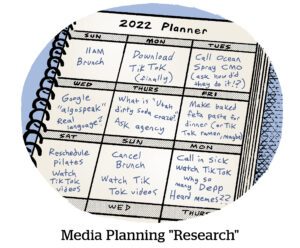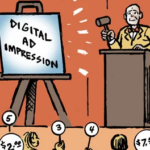 The parade of data-driven ad platform launches by companies that don’t traditionally monetize through advertising seemingly cannot be stopped.
The parade of data-driven ad platform launches by companies that don’t traditionally monetize through advertising seemingly cannot be stopped.
In the past month alone, Walmart-owned Sam’s Club, the hotel chain Marriott and Volta, which manufactures charging stations for electric cars, have all launched or rebranded their advertising and programmatic revenue groups.
Last November, music labels got into the mix with the launch of WMX, Warner Music’s ad platform.
And the beat goes on. The latest example is Universal Music Group (UMG), a top music label which last week launched its data-driven ad-targeting platform called the UMusic Media Network.
Universal has some owned-and-operated media, including a social media-based entertainment company called Rebel Labs aimed at teens and a younger demographic, as well as Mercury Studios, which works with artists to create content. It also has a TV and film production group called Polygram Entertainment.
But the UMusic network primarily aggregates inventory from across Universal’s footprints on major social media platforms.
“What we’ve done as a basic step is aggregated our inventory across the platforms to give brands access to what we have,” said Richard Yaffa, EVP and global head of Universal Music’s brand and agency group. “We’re really focused on bringing all of these assets together through our partners.”
Yaffa, who oversees the new media network, wouldn’t name specific platforms, aside from YouTube (which, duh – it’s the main music video platform). But he did say that for now at least the UMusic business is focused on video ads and video content.
There are other parts of the Universal Music business for brands that want to work with one or more specific artists on content production or do marketing integrations like getting a brand featured in a music video.
But the UMusic network is more of a programmatic-minded platform. Rather than picking artists, brands and agencies can look for audiences, such as young men aged 18 to 30 or young women in certain markets. The platform then assembles a media plan to fit.
The company also layers in its own data, some of which Yaffa said is quantitative data that can be directly used for targeting and attributing audiences, including its own marketing data.
“UMG has our own data team that we utilize to help market our artists,” he said.
Yaffa also cited the qualitative data Universal maintains as part of the “pulse-taking” exercise it does with its audience, including fan surveys and tracking their attachment to certain brands or topics. In the online ad platform world, that falls under brand lift or brand sentiment measurement following a campaign.
There are multiple potential growth routes for the business. One option, which Yaffa said the UMusic Media Network is “contemplating” but hasn’t yet adopted, is to do audience extension campaigns based on Universal’s data and known audiences. (That’s the typical retail media play, where audiences are targeted across the web.)
The problem with audience network extensions, though, is that they rely primarily on display ads – and UMusic is primarily video. Also, they rely on a very large first-party data set of identifiable and trackable web users. Universal Music may reach tens or hundreds of millions of fans, but they do so primarily in environments where users can’t be retargeted elsewhere – social media walled gardens and real-world venues.
Media partnerships are a priority, however, Yaffa said. The Universal Music Group for Brands arm of Universal, for example, announced a deal with Condé Nast last year to support a product called Condé Nast Certified Video Plus (CNCV+), which places in-stream video ads alongside the magazine company’s portfolio, particularly for video content.
“We can work with Condé Nast and others to create culturally relevant content,” Yaffa said. “And then we can send our media and extend our audiences through that.”














